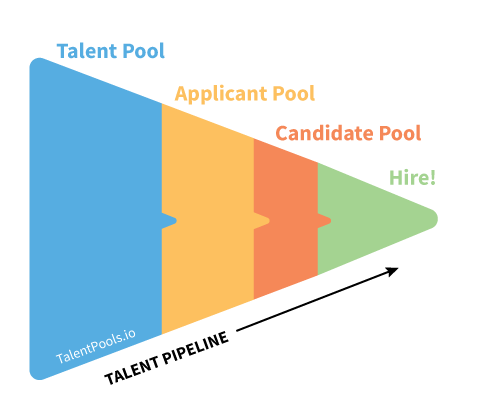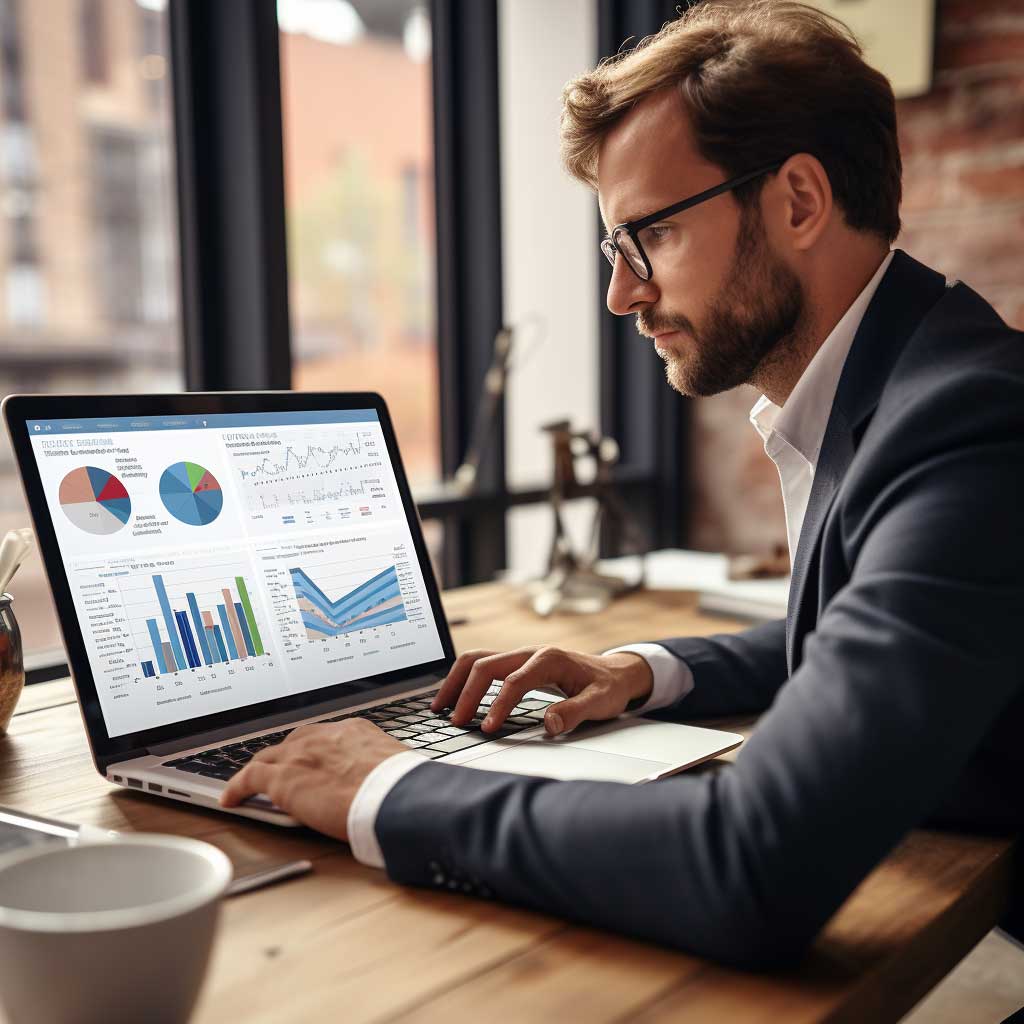Candidate Pool Meaning: How Building a Pool can Boost your Recruitment Strategy in 2023
Candidate Pools, Talent Pools, Applicant Pools – what do they all mean, and why are they important in 2023? As recruitment heats up, creating your own pool of potential hires is one of the best ways to remain competitive. Let’s explore what candidate pools are, why they’re important, and how to build and benefit from them.
Contents Links
> Defining Candidate Pool in Recruitment
> Using your Talent Pool to grow your Applicant Pools
> Moving Talent from Applicant Pools to Candidate Pools
> Understanding the Importance of a Robust Candidate Pool
> Best Practices for Building a Candidate Pool
> Maintaining a Strong Candidate Pool
> Identifying Gaps in the Candidate Pool
> Strategies for Improving your Candidate Pool
> Value of Candidate Pool Software
> Comparing Candidate Pool Software
> Wrap Up: Meaning of Candidate Pool in 2023
Introduction
Candidate pools are like a goldmine for recruiters. They’re collections of potential hires who have expressed interest in working with a company or are deemed suitable for future roles via job boards. But short listing isn’t just about hoarding resumes. The richness, diversity and participation in these pools can make or break an organization’s talent acquisition strategy. Indeed, McKinsey’s study offers much to confirm that diverse talent leads to financial success.
A robust pool, often sourced from job boards, equips companies with a wide range of skills, experiences, and perspectives at their disposal. It provides them with the flexibility to create a short list quickly and efficiently, ensuring participation when new positions open up without starting from scratch every time.
Defining ‘Candidate Pool’ in Recruitment
What’s a Candidate Pool?
Unfortunately, most dictionaries don’t offer a definition for this phrase – here’s what the Collins Dictionary says.
A candidate pool is a shortlisted group of the most relevant people who applied for a role.
However, if you’re struggling to distinguish between a talent pool, an applicant pool, and a candidate pool, you’re not alone!
Is Candidate Pool a Talent Pool Synonym?

- Talent Pool: This is your go-to reservoir of all relevant potential hires. It’s like the ocean where all kinds of fish live. You’ve got individuals who may or may not be actively seeking jobs but have the skills and qualifications that could benefit your organization, or your client’s organization. The Cambridge Dictionary is actually quite helpful here – it defines ‘talent pool’ as “the suitable, skilled people who are available to be chosen to do a particular type of job”.
- Applicant Pool: Think of it as a smaller pond within the ocean. These are individuals within your Talent Pool who have actually applied for a role. They’re not just any fish; they’re the ones you now have your eye on.
- Candidate Pool: Now we’re talking about an even smaller body of water – maybe a bucket? These are folks from your Applicant Pool who you have shortlisted as having high potential for the role.
However, it’s also true that these three terms are often used interchangeably. So when someone talks about an applicant pool, or candidate pool, this might just be used as a talent pool synonym – referring to a general talent pool of professional profiles, who may be suitable for future vacancies.
Unique Characteristics
Now that we’ve got our product definitions straight, let’s talk about what makes each product unique.
- Talent Pool: It’s all about diversity here! Your talent pool should be filled with people from various industries, backgrounds, skill levels – you name it! It’s like casting a wide net to catch all kinds of fish. Of course, you also need to cast your net to focus on your target audience. It’s a balance here – the wider the net, the more available profiles; the smaller the net, the more relevant the profiles are.
- Applicant Pool: This is driven by how effectively you engage your talent pool, to improve visibility of the role, and increase the number of applications you get. If you’re super effective, you’ll also target audiences outside of your current talent pool (for example, posting the role on LinkedIn or Indeed) to bring more profiles into your talent pool in order to apply for this job.
- Candidate Pool: Here the recruiter or employer will be reviewing and shortlisting the best candidates. Then, it’s on the the final step of the recruitment process – interviewing the profiles in the final candidate pool and making a hiring decision.
Usage Scenarios
So when would you dip into each type of pool?
- Build up your talent pool based on you your long-term hiring strategy – think as broadly as possible about the types of candidates you are hoping to attract for all your job roles. Then notify all relevant profiles within this talent pool whenever a vacancy arises. It may be that a company like TalentPools may provide an online talent pool software for you, and an external recruitment firm may help you source this talent to create a ‘virtual bench’ of available profiles.
- Either the external recruiting partner, or your internal HR team may boost the applicant pool of your vacancy, by reaching out to relevant talent in your pool.
- Again, both the external recruiting partner and your HR team may take on the role of reviewing the applicant pool and shortlisting the best candidates to produce your candidate pool. Then it’s up to the hiring manager(s) to interview the candidate and move forward with the hire.
Understanding the roles of these types of pools can allow you to use technology and create processes that streamline recruiting significantly. Ultimately, this results in a larger, more relevant talent pool that generates more applications faster. With Glassdoor Economic Research reporting the average time to hire in the US at 24 days, anything you can do to speed this up will be welcome by your hiring manager!
Using your Talent Pool to grow your Applicant Pools
If you have invested in a quality talent pool, it will be faster and easier to source your applicant pool for each vacancy.
Recruiters: The Lifeguards Of The Candidate Pool

Recruiters are like lifeguards overseeing their pools of potential candidates. Their role is crucial in forming, engaging and managing these talent pools. Each phase is important – sourcing, onboarding, vetting, engaging, and ultimately interviewing and hiring.
Firstly, they identify potential candidates who could fit current or future vacancies within their organization (or client’s organization if they work for an agency). They contact and source these individuals through various channels such as social media platforms, professional networking events, or direct contact methods. This could involve good old-fashioned email and telephone outreach.
Next, recruiters onboard candidates into the pool by building out their profile, getting their LinkedIn profile, CV/Resume and any other relevant data. The goal here is to develop enough information into the pool so that when vacancies are posted, the recruiters can quickly tap into this ready-made talent source to find the most suitable candidates.
But not all candidates are created equal…
Active vs Passive Candidates: Spotting The Difference
In any given candidate pool, you’ll find two types of individuals: those actively engaged in the process who are looking for roles, and those passively participating (who may already be employed) with a view to keep an eye out for potential new roles.
- Active Candidates: These folks are actively looking for jobs; they’re sending out resumes left and right, and will respond quickly to any relevant opportunities.
- Passive Candidates: On the other hand, these folks aren’t necessarily looking for new opportunities but would consider something if the right role came along.
Lorena Prego at Prometeo Talent comments that recruiting passive candidates offers access to a broader talent pool, high quality talent and lower turnover rates.
Of course, it’s natural for any candidate pool to have a mixture of both active and passive potential candidates, but in general, the more engaged your talent is, the better!
Motivating Talent to Apply for Roles
So you’ve created a pool of thousands of quality, relevant talent and now you have to fill your vacancy. How do you translate profiles into concrete applications?
Naturally, if you’re using a good talent pool software, your vacancy will automatically be sent out to relevant talent, to invite their applications. But great recruiters will go a step further.
They will already have built positive relationships with talent as part of their onboarding process, and will have kept in touch via newsletters and other communications. Now, they’ll pro-actively search through the talent pool to find the best matched potential candidates and reach out directly to them. Are you more likely to apply to a generic – “Apply for this Job” email, or a personalized email that says “Hey Bob, great to be in touch recently. I took a look at your profile and I think you’re a great fit for this role. Is it worth a quick call?”
By using tech, and being proactive, recruiters can generate a decent list of applications, ready to be reviewed.
Moving Talent from Applicant Pools to Candidate Pools
Transition from Applicant to Candidate

Let’s dive into the nitty-gritty of the application process. You see, there’s a fine line between being an applicant and becoming part of the candidate pool. The term ‘applicant’ refers to anyone who throws their hat in the ring for a role at a company or agency. They’ve filled out an application, maybe submitted a CV or resume, but that’s about it.
On the other hand, when we talk about ‘candidate pool meaning’, we’re referring to those applicants who have made it past the initial screening phase. This is where things get interesting:
- The company has taken a look at their application
- They’ve been deemed a good fit for the role on paper
- They’ve been shortlisted for further evaluation
This transition isn’t just about ticking boxes on an application form. It involves careful scrutiny by hiring managers or recruiters to ensure that only qualified individuals make it through to the final shortlist.
Factors Influencing Transition Process
Now you might be wondering what influences this transition? Good question! Here are some key factors:
- The quality of the application: This includes how well applicants present themselves on paper – their qualifications, skills, experience – all these play a part.
- The relevance of qualifications: If you’re applying for a clinical study coordinator role but your experience is in product licensing, chances are you won’t make it into the candidate pool.
- Communication skills: How well does an applicant communicate? Are they able to clearly articulate their thoughts and ideas? Remember: communication is key!
Role of Screening Methods
Screening methods also play an integral role in shaping up this pool from mere applicants:
- Telephone interviews: A quick chat can reveal more about an applicant than what’s written on paper.
- Online assessments: These help gauge technical skills or personality traits relevant to the role.
- Data analysis: For roles requiring technical expertise, data interpretation tests can separate wheat from chaff.
These methods aren’t just arbitrary hoops for applicants to jump through; they’re carefully designed filters ensuring only suitable candidates swim into view.
Using tech can speed up the process. For example, TalentPools offers a convenient interface that easily allows recruiters to see an ordered list of the best-suited applicant profiles. This is based on a scoring algorithm that the recruiter can actually customize themselves to reflect the needs of that specific job role! They can also filter out any irrelevant profiles based on a wide range of data points, to narrow down the list from say 100 applicants, to the top 10 more relevant profiles to review.
Impact on Recruitment Strategy
Understanding this transition process isn’t just academic curiosity; it has real-world implications for recruitment strategies:
- Knowing what makes an applicant turn into a candidate helps refine job descriptions and requirements.
- It allows companies to streamline their screening processes, saving time and resources.
- By improving communication during this phase, firms can enhance their reputation among potential employees.
Understanding the Importance of a Robust Candidate Pool

A Well-Rounded Candidate Pool: The Perks
A robust talent pool, what’s the big deal? Imagine having a treasure chest full of diverse talents, skills, and experiences. That’s essentially what a well-rounded candidate pool is. It’s not just about numbers; it’s about quality and diversity.
- Quality: Having a wide array of candidates increases your chances of finding high-quality applicants that are perfect for your job opening.
- Diversity: A diverse candidate pool promotes different perspectives, fostering innovation and creativity within an organization.
It’s like fishing in a well-stocked pond; you’re bound to get some good catches!
Time-to-hire Metrics: The Domino Effect
Ever heard the phrase “time is money”? In recruitment, this couldn’t be more accurate. The longer it takes to fill a position, the more productivity is lost. But how does a robust talent pool play into this?
Well, think about it this way: if you have plenty of qualified candidates at your disposal, you can speed up the hiring process significantly. You don’t have to wait for applications to trickle in or spend countless hours searching for potential hires. It’s all there in your talent pool!
So basically:
- More candidates = quicker hiring process
- Quicker hiring process = less productivity loss
- Less productivity loss = saving time and money
Makes sense, right?
Diversity Goals: An Unexpected Ally
We live in an increasingly globalized world where diversity isn’t just nice—it’s necessary! And guess what? A diverse candidate pool can help you meet those crucial diversity goals within your organization.
By casting a wide net when sourcing candidates, you increase your chances of attracting individuals from various backgrounds and factors.
- Different backgrounds = different perspectives
- Different perspectives = innovative solutions
- Innovative solutions = business growth
Employer Branding: Making an Impact
Let’s talk about employer branding—the image and reputation of your company as an employer. According to a study by LinkedIn, 75% of job seekers consider an employer’s brand before applying for a job.
A solid talent pool shows that many people are interested in working for your company—that’s always good for the brand image! As above, a diverse pool also signals inclusivity as a company brand goal.
The talent pool itself can also contribute to your brand’s visibility. Software like TalentPools enables brands, recruiters and staffing firms to create their own online talent pool, with your own brand. Instead of directing people to apply via LinkedIn or another generic ATS, you can own your own recruiting platform and display candidates under your own brand.
Best Practices for Building a Candidate Pool
Attracting Potential Candidates
You’re looking to build a robust talent pool, right? So, what are some effective strategies to reel in those potential candidates?
- Job Fairs: These events can be a gold mine for finding potential candidates. Just set up your booth and let the talent come to you!
- Social Media: build your community of likeminded folks who align with your brand.
- Clear Job Descriptions: when jobseekers see the vacancies you’re publishing, will they be attracted to apply?
- Consider Remote Work: don’t limit yourself to talent in your immediate location – there could be better candidates a little further afield.
- Encourage Diversity: if you want the best talent, triple check that your job posting doesn’t inadvertently include assumptions that may reduce the likelihood of quality talent from applying.
- Use AI-Powered Tools: AI is here and your competitors will be using it, so you really need to review the options and include AI tools within your recruiting process.
Remember, attracting candidates isn’t only about casting a wide net. It’s about hooking the right fish! Make sure you’re targeting the right audience with your recruitment efforts. For instance, if you’re after tech-savvy millennials, then online job boards might be your best bet, whereas a graduate-focused outreach might benefit from in-person stalls at university careers fairs.
Participate Actively at Job Fairs and Networking Events
Offline marketing is often overlooked, but can be the most direct way to reach talent. Job fairs and networking events are like speed dating for companies and potential employees. They offer a great platform for companies to meet many potential candidates in person within a short period of time.
- Prepare well before attending these events by researching about attendees.
- Have attractive booth setups with engaging activities.
- Follow-up promptly after these events to keep up the momentum!
Using Social Media & Professional Networks

No doubt you may already be using platforms like LinkedIn to help you find passive candidates who may not actively be looking for jobs, showcase your company culture and connect directly with potential applicants. Actually, a Jobvite survey indicated that 78% of recruiters believe so strongly in social media that this is the primary area of additional investment.
Beyond the larger platforms, there are many niche communities like GitHub (for developers) or Behance (for designers), which can be great places to scout out potential talent based on their portfolio of work.
Creating a solid strategy is essential prior to investing time and money in building your presence on any platform. Choosing the right network, understanding your competitive placement within it, and planning content that speaks to your target audience are all critical elements within a social campaign.
Clear Job Descriptions & Employer Value Proposition (EVP)
Ever tried assembling furniture without instructions? That’s what applying for jobs feels like when companies don’t provide clear job descriptions or articulate their employer value proposition (EVP).
A well-crafted job description does two things:
- Helps attract qualified applicants who know exactly what will be expected of them
- Deters unqualified individuals from applying, to avoid wasting time on irrelevant applications
Your EVP – essentially why someone would want to work at your company – needs equal attention:
- Highlight perks beyond salary: flexible hours, remote work opportunities…you name it!
- Showcase career development opportunities: training programs, mentorship initiatives…
- Don’t shy away from flaunting any awards or recognitions received as an employer
In essence, clear job descriptions and compelling EVPs aren’t just nice-to-haves; they’re must-haves in attracting professionals to your talent, applicant and candidate pools!
Embrace Remote Work Possibilities
In today’s world, remote work is not just a trend but a necessity to compete with other employers. According to SHRM, 52% of workers would choose to work remotely on a full time basis.
By offering remote work vacancies, you can attract talents from around the globe who might not be able or willing to relocate for work. This opens up your talent pool to thousands of new potential hires across new geographies who may have the skills and experience you’re looking for.
- Hundreds of huge brands like Twitter and Shopify have announced their decision to move towards a decentralized workforce.
- Companies like GitLab have fully embraced the remote culture and built their entire team remotely.
Even if you have a global talent pool, you can still post vacancies which target specific countries or cities – so you’re not losing anything either way.
Encourage Diversity Through Inclusive Job Postings
Another way to widen your candidate pool is by encouraging diversity through inclusive job postings. Your job advertisements should be free from any discriminatory language or bias that may deter certain groups of people from applying.
- Make sure you use gender-neutral language.
- Avoid using jargons or industry-specific terms that outsiders may not understand.
- Include statements showing your commitment towards diversity and inclusion.
Inclusive job postings not only attract more diverse candidates but also enhance your company’s reputation as an equal opportunity employer.
Utilize AI-Powered Sourcing Tools

AI-powered sourcing tools can help you find hidden talent that humans may overlook, and helps candidates improve their profiles and apply for roles.
- LinkedIn Talent Insights uses AI to provide insights about talent pools.
- HireEZ uses AI to source passive candidates across multiple platforms.
- TalentPools helps candidates auto-improve their profile, and draft cover letters that more effectively highlight their relevant experience.
These tools automate sourcing tasks, freeing up recruiters’ time for other important tasks such as building relationships with candidates.
So we’ve listed a number of well-known ways to build up your talent pool. There are also others not covered, like direct outreach via cold email or telephone, so it’s worth exploring all available options as part of your creating your strategy. Beyond these methods, often the best way to compete with other brands sourcing talent is to think creatively about your niche, and test new ideas.
You could build a useful tool for candidates, host a unique event, publish PR in super-niche publications, partner with an industry media company, commission and publish a specialist study, or any one of a hundred other ideas. The most innovative companies are able to attract top talent without out-spending their competitors.
Maintaining a Strong Candidate Pool
Engaging Candidates Over Time
Once you’ve launched and stocked your talent pool, you’ll need to keep them engaged to avoid these top professionals being snapped up by your competitors.
Regular communication keeps potential candidates in the loop and makes them feel valued. Imagine you’re a professional who hasn’t heard anything from a talent pool since you signed up. A few months later, you get an email about a vacancy. You’re probably thinking; “Who is this, and how can I trust them?”
Sending regular, useful notifications is not that difficult – here are a few manageable options:
- Company Newsletters: These can cover everything from company achievements to employee spotlights.
- Industry Trends: Keeping talent informed about what’s happening in the industry can make them feel connected, and position you as a trusted and reputable brand.
- Job Openings: Sharing regular, relevant job openings can help keep potential candidates interested. For example, TalentPools allows you to send your talent job opportunities based on their profiles matching certain data points, and/or a combined matching score.
Nurturing Relationships with Passive Candidates
Next up on our list is nurturing relationships with passive talent too. Now you might wonder why we should bother about people who aren’t actively looking for jobs? Well, here’s the thing – they might not be looking now but who knows what tomorrow holds?
Passive professionals are often overlooked gold mines in the recruitment process. They might already have jobs but that doesn’t mean they aren’t open to better opportunities.
By investing in building relationships with even the most passive profile, you will be in the forefront of their minds when they do start looking for their next roles, so your talent pool will be the first that they check at that point!
Relationships with Past Applicants/Candidates
Alright, so you’ve got these amazing applicants knocking at your door. But what happens when there’s no open position at the moment, or when an applicant does not make it to the interview stage? Do you just forget about them? I hope not!
Unfortunately, that’s what most organizations do. The fast-paced recruiting environment leads to a lot of wastage, where 90% of valuable applicants are ignored after a vacancy is filled.
Maintaining relationships with past applicants or candidates is crucial in building a solid candidate pool. Why?
- They already showed interest in your company.
- If they had a positive experience during their previous application process, they’ll likely apply again.
- It’s much easier and cheaper to notify people in your existing community, than create external campaigns to find new applicants.
So how do you maintain these relationships?
- Keep them updated on new job openings.
- Share relevant content that might interest them.
- Engage with them on social media platforms.
- Provide quality feedback whenever applicants don’t move forward.
Providing Feedback: A Key Strategy

Feedback matters – it shows that you value the applicant’s participation and effort regardless of whether they landed the job or not.
Knowing where they stand also helps these potential candidates to review and develop their profiles, which in turn increases the value of your talent pool. Plus, it also adds brownie points to your brand as an organization that gives back to its community, when most candidates are used to just being ignored if they don’t reach the interview stage.
If you’ve ever applied for a job, you may remember how emotional it can feel when waiting to hear back from the recruiter. Did you ever hear back from them? Did you get a standard ‘Sorry you weren’t selected email? Or did you get an email or phone call with valuable feedback that helped you build up your profile?
It’s at this point that brands can build a trusted relationship with applicants, that they will remember. TalentBoard’s research points to feedback having a huge impact on whether the applicant will ever apply for a role again at that organization, with no feedback resulting in high drop-off rates and useful feedback increasing brand engagement by 20%.
So there you have it – three strategies to maintain a strong talent pool:
- Regular communication
- Nurturing relationships with passive candidates
- Providing timely and valuable feedback
Using these strategies will surely keep your bench strong enough to fill key positions whenever needed without having to scramble at the last minute!
Identifying Gaps in the Candidate Pool

The Art of Spotting Missing Skills
You’ve got a pool of potential employees, all eager and ready to prove themselves. But something seems off. There are gaps – missing skills or experiences that should be there but aren’t, which reduces your talent bench strength.
Employment tests are useful here – they’re not just about assessing knowledge or technical skills, they’re also about revealing character traits, problem-solving abilities, and even cultural fit within your organization.
But it’s not just about identifying what’s lacking in individual candidates – it’s about spotting trends across your entire candidate pool. For example:
- Is there a pattern of candidates lacking certain key skills?
- Are most applicants inexperienced in a specific area crucial for your business?
These patterns could indicate systemic issues with how you’re attracting or selecting potential employees.
Bridging Business Needs & Your Candidate Pool
Now comes part two: connecting the dots between these gaps and your business needs or strategic objectives. Here’s where analytics come into play – they provide data-driven insights that help align the requirements for an open position with available talent in your candidate pool:
- If data shows many candidates lack experience with a specific software essential to the role, consider revising job descriptions to emphasize this requirement.
- A lack in a particular skill area could be remedied by a targeted outreach to a niche community that focusses on that skill space.
- If analytics reveal an abundance of applicants from one geographic location but few from another where you have significant operations (or wish to expand), strategize on ways to attract talent from those areas.
Strategies for Improving your Candidate Pool
Earlier, we covered a number of methods for initially attracting talent to your pool, which can also be useful for growing and improving your existing talent pool. Here are a few new ideas that may also be helpful.
Targeted Recruitment Marketing Campaigns
Targeted recruitment involves creating campaigns that are highly focused on the exact candidates you are looking for. The goal here is quality, not just quantity.
- First off, figure out who your ideal candidates are. What skills do they have? What kind of experience?
- Then, design your campaign around these traits. Use language that speaks directly to them.
- Finally, choose the platforms where your ideal candidates hang out.
For instance, if you’re looking for tech-savvy millennials, LinkedIn and Instagram might be good places to start.
Employee Referral Programs

Next up on our list is leveraging employee referral programs effectively. Just think about it – who better to find new talent than those already doing a great job?
- Start by implementing a system that rewards employees for referrals.
- Make sure it’s easy for employees to refer people – this could involve software or just an easy-to-use form.
- Promote the program regularly so it stays top-of-mind.
Remember, word-of-mouth is still one of the most powerful (and affordable!) marketing tools out there!
Partnerships with Educational Institutions or Industry Associations
Ever thought about exploring partnerships with educational institutions or industry associations? It’s like planting seeds in a garden – if you invest in the time to plant and water them, you know that for sure those trees will produce the fruits you’re looking for.
- Reach out to colleges and trade schools related to your industry to create relationships
- Create mutually beneficial campaigns that allow you to market to their networks, and offer your unique insights, work experience opportunities or other items of value.
- Consider offering internships or apprenticeships.
- Sponsor events at these institutions to increase visibility.
This way, you can tap into pools of potential candidates who are already studying or working in fields relevant to your business. Your outreach will also be given greater attention and respect because of your association with the trusted institution.
Optimizing Career Site SEO

SEO (Search Engine Optimization) is one of the most effective and affordable ways to increase the visibility of your talent pool.
According to Recruiter.com, 70% of job seekers start their job search with Google. So being visible on search engines like Google are essential to reaching the majority of potential candidates.
We’ll focus on SEO here, because it can generate long term traffic without constantly competing on budget against other advertisers.
Here’s a summary of your SEO to-do list:
- Firstly, it’s crucial to conduct keyword research to understand what terms jobseekers are using when searching for jobs online. These keywords should then be incorporated into the website’s content, meta descriptions, and title tags to increase visibility on search engine results pages.
- Secondly, you’ll need to optimize the website’s structure and design. A website that is easy to navigate and mobile-friendly is likely to rank higher on search engines. Additionally, it’s important to ensure that the website loads quickly, as slow loading times can negatively impact SEO.
- Thirdly, begin regularly creating high-quality content. The website should provide valuable information to jobseekers, such as career advice, industry trends, and job descriptions. This type of content not only helps to improve search engine rankings but also encourages users to spend more time on the site.
- Fourthly, target local SEO – optimizing the website to appear in search results for jobseekers in specific locations. This can be done by including location-specific keywords in the content and meta descriptions.
- Finally, your site or application should also engage in link building, reaching out to other reputable websites and inviting them to link to the valuable content on your website. These backlinks can significantly improve the website’s SEO, as search engines view them as a sign of trustworthiness and authority.
Although it is possible to complete all these steps yourself (with a little help from some affordable online SEO tools like SEMrush), an effective campaign can really benefit from the attention of an SEO professional. You can hire an SEO agency directly, or find an individual SEO freelancer from platforms like UpWork.
By implementing these SEO strategies, a talent pool can increase its visibility on search engines, thereby attracting more jobseekers. It’s a long term strategy, but pays dividends.
Whether you’re running targeted campaigns, social media marketing, partnerships with institutions or SEO, improving your talent pool isn’t something that happens overnight. But with creative thinking, and the investment of time to test various options, your pool of potential candidates can grow significantly over time.
Value of Candidate Pool Software
Hosting your Talent Pool
You’ll need somewhere to store your talent profiles in order to review your database to find the right candidate for a particular vacancy. Keeping paper resumes in a filing cabinet seems a little outdated, but many recruiters still store PDF resumes and use Excel spreadsheets as their primary database. While this is simple, it missed out on a lot of potential improvements.
Simply moving your talent database online offers an immediate value in storing data in a more ordered manner, making searching and filtering easier. It enables online communications via chat, email and video calling. And it promotes your organization by putting your brand front and center on anything communicated to both candidates and clients.
We’ll review some of the options a little later, but for now we’ll assume that you have some sort of online database of talent.

Efficiency Through Automation
If you’re a recruiter, you may often get a mountain of CVs to sift through. You don’t have time to review every single one thoroughly, so its easy to miss a super-relevant applicant. That’s where candidate pool software comes to the rescue.
This software works like your own personal assistant, automating many of the time-consuming tasks involved in recruitment.
Matching with Talent
As soon as you post your vacancy, the software scans through tens of thousands of online profiles instantly and provides an ordered list of the best matched talent. You can also customize the matching algorithm used, tweaking it based on the requirements of the job, to get a more accurate ordering of talent. You can also create custom filters that ignore resumes that don’t have the hard requirements for that vacancy, so you only need to review the profiles that fit perfectly.
This helps you save hours of time, and see profiles that you wouldn’t otherwise have time to find manually, or may have missed on initial review.
Communications
Recruiters often have to spend a lot of time emailing and calling talent to find out if they’re available for work and if they’re interested in the role.
Using candidate pool software takes care of much of this. When the vacancy is posted, the platform can automatically notify all the relevant talent on the platform, based on their interests and skills, and invite them to apply for the role. Once candidates have applied, you immediately know that they are available and interested in the role.
As a recruiter, with a click of a button, you can also pro-actively reach out to the top ranked talent to encourage them to apply for the job. Once applicants apply, all communications with them is stored on the platform for ease of use.
Once you have shortlisted the best applicants to create your candidate pool for the vacancy, you can set up and run video interviews directly on the platform, to help make a decision to move forward with a hire.
Overall, candidate pool technology can act as a valuable time-saving tool to avoid recruiters wasting time on manual tasks, so they can focus on what matters – engaging personally with candidates to move the process forward. It also improves the candidate experience – streamlining the application process, speeding up response times and improving their communication flows.
Self-Serve Client Flow
One of the advantages of running your own talent pool, rather than using a VMS, CRM, FMS or other internal recruitment software, is that you can open it up to your clients. This way, hiring managers or recruiters from other organizations can post vacancies themselves, search through your talent, engage potential candidates and make hires without any support from your staff.
If you choose to enable this functionality, your clients can use a self-serve user experience. For recruiters and staffing firms, this offers the potential to scale your business by making placements without hiring more staff.

Contracts and Payments
Another available feature is the ability to create hire candidates online. The platform can automatically generate formal work contracts for hiring freelancers and contractors. This saves time and money in legal bills.
Once the contract is complete, employers can manage the contract and any related deliverables directly within the platform. All communications around completing tasks and refining the work can also be handled on the same page, keeping everything within the same place for easy management.
Making matters even easier, talent firms can charge employers automatically via the platform, using payment partners like Stripe to allow clients to pay them via card, direct debit, ACH, cryptocurrency and other methods.
The platform can also put aside your chosen margin, and pay workers their earnings to their local bank accounts in 150+ countries.
Using software like TalentPools allows you to handle contracts, project management and payments all within the same system, rather than using multiple platforms, saving time and increasing efficiency.
Business Model Support
Talent pool software can also increase profitability at your staffing firm, by offering new revenue streams. Of course the tech will allow you to customize and charge your margin. More sophisticated tools will enable you to create dynamic commissions that change based on the earnings of a worker, or whether they have referred in new talent, or if they have a premium subscription. These triggers all motivate candidates to remain on the platform instead of pursuing alternatives.
Selling subscriptions is not common in the recruitment space, but this offers platforms a reliable way to earn consistent income. Subscriptions can be charged to both employers and workers, perhaps offering a premium service to those users such as guaranteed placements within a shorter time.
Boost your Branding
Using a white-label talent platform offers a big value-add above internal talk software – namely the ability to raise the visibility of your brand. The software lets you upload your own logos, fonts, color scheme and other unique branding elements, to make the platform fit alongside your other company assets.
If you are introducing candidates to employers by sharing their Resume, or their LinkedIn profile, you’re missing an opportunity. Instead, talent pool tech allows all your candidates to have their own online profile, similar to LinkedIn. But this profile is hosted on your own branded platform, so when you share this candidate with others, it’s your brand that gets noticed.
Likewise, every successful placement, project and transaction that is powered by your branded platform builds the reputation of your firm.

Better Data and Administration
Using a talent pool technology makes it easier to view insights in your organization. How many active candidates to you have? How many are in live contracts? Are there any open vacancies with no applicants? What trends do you see across your whole talent pool? Software can help you visualize this data in an in intuitive dashboard.
You can also get easy access to all your data. Within your Admin Dashboard, you can search, access and edit each data point across users, jobs, applications, transactions etc. You should be able to export this data too, often in the format of a csv file that you can then import into your other systems or use offline. Finally, many tools offer Webhooks which allow you to instantly send data to other online systems.
In terms of customization, your admin panel should allow you to choose which features to turn on or off, and to tweak those features to suit your specific use-case. For example, TalentPools offers 250+ features, which can all be enabled and customized to produce the exact user journeys needed.
What about connecting with your other tools? The more pre-built integrations the better! Your admin portal will offer you the ability to integrate with standard tools like Intercom, Google Tag Manager, and potentially thousands of others via Webhooks and/or Zapier.
Compliance Management Capabilities
As regulators tighten up on personal data, compliance is becoming more relevant that ever. In the EU, falling foul of GDPR can result in monstrous fines, so it’s essential to store your candidate data in a software product that is fully compliant. A great product can also help you avoid other legal minefields, like equal opportunities laws and employer classification regulations.
For example, the best software will:
- Automatically discard Resumes after a certain period as required by data protection laws.
- Support you to write job descriptions and application forms that prevent discrimination during hiring.
- Allow you to update or delete user data on request.
In short, candidate pool software should take care of a lot of compliance so you don’t have to worry so much about it!
Cloud-Based Scalability Options
In today’s fast-paced business environment, businesses can often expand at lightning speed, and software is well placed to let you scale quickly and affordably.
Cloud-based candidate pool software allows organizations to easily scale up or down according to their needs without having significant impact on operational costs or system performance. Often there are no space limitations, and when there are, you can just upgrade your plan. And if you are going through a slower period, you can temporarily downgrade your plan until things pick up.
For businesses that want to grow to thousands or even millions of users, there is simply no alternative – solid software is a requirement.
So all in all, talent pool software can help your organization grow faster through automation, online contracting and payments, better use of data, greater brand visibility, easier compliance and faster scalability. What else do you need?!
Comparing Candidate Pool Software
As we’ve seen, candidate pooling software adds huge value to the recruitment process. So where do you begin when reviewing which software to use? Should you focus on an industry-specific option, a well-known brand, a flashy new technology, or even build your own application? Let’s take a look.
Candidate Pool Options
Here are a few options to consider when planning your candidate pool:
- Social Media – invite professionals to join your LinkedIn or Facebook Group.
Pros: Free, connected to a large social network, set up for regular communication
Cons: No customization options, not your own platform, limited outreach to that network - Membership tool / job board on your website – invite professionals to join as a member of your existing website.
Pros: Your own platform, your own brand, some bundled recruitment functionality, affordable cost
Cons: Limited scalability, not custom-built for purpose, limited to simple job board rather than customizable talent / candidate pool system - Recruiting CRM software – add potential candidates to your own choice of CRM system
Pros: Recruiting CRMs (or FMSs) are built specifically to act as databases of talent, allowing you to import, export and search through your pool effectively.
Cons: More costly, not usually brandable, limited customization options, not public-facing - Building your own tool – create your own system to add and support talent
Pros: Customized to your exact use case, fully extendable, IP increases company value
Cons: Very expensive – at least $100k for an MVP, then ongoing costs to hire a CTO, plus business risk in becoming a product-focused company rather than a service-focused company. - Talent Pool software – launch your own branded talent pooling software
Pros: user journeys and admin functionality purpose-build for growing and managing your talent pool, use your own branding, unlimited customizations and integrations.
Cons: More costly, focus on talent pool means less internal focus on other parts of the hiring flow
Ultimately, if you want to build the best talent / candidate pool, you need to use the best talent pool technology. Consider TalentPools as a starting point, and we’ll review more options below.
Key Factors in Software Comparison
As we’ve seen, if you’re in the market for candidate pool software, there are a ton of options out there. It’s important to undertake a thorough review and ideally a full trial before making your decision. Factors like cost, branding, customizability, scalability, support and integrations are all important to bear in mind.
User Reviews and Testimonials
User reviews and testimonials offer an unbiased look at how well the program performs in real-world scenarios. Customers share their thoughts on the tech, customer support and value for money on platforms like G2 and TrustPilot, so it’s worth checking out the official reviews before making your decision. Of course, not everyone will have the same experience with a product, so look for trends in reviews rather than focusing on individual ones.

Integration and Customization Abilities
For many organizations, it’s important for new software to integrate with other systems already in use, to avoid the wasting time and introducing errors through duplication. Many software products have pre-created integrations with other tech, either directly or via third-party integrations. Other options allow you to build your own integrations with thousands of other apps through Webhooks and clever use of tools like Zapier. For example, TalentPools allows you to take any event, say the registration of a new talent profile, and use Zapier to send them an SMS, or add their details to a Google Sheet, or add them to another CRM.
Custom integrations may also be possible via support or API endpoints. If the product has its own API, you can hire developers to build your own custom integrations with third party software. The software firm may also offer such integration as a premium service. For example, TalentPools allows clients to commission their internal team to build any development work, at a standard hourly rate.
If you are looking to create unique user experiences and functionalities, to differentiate your platform form your competitors, you need to be able to develop custom code on top of the standard software. And unless you have the internal expertise to design and develop software, commissioning the software company to build them on your behalf is a great option.
As technology becomes increasingly important, integration represents a critical factor in your decision. Cheaper, closed-box systems will quickly become redundant, struggling to compete with other products that prioritize open connections with wider ecosystems.
Vendor Support Services
A brilliant product is useless if you don’t know how to use it. However good a company’s documentation may be, there will always be other questions you have. It’s also just easier to jump on a call and get an interactive demo rather than reading a guide or watching a video. That’s why vendor support services should be high up on your comparison list when shopping around for candidate pool software. Look out for vendors who provide both solid documentation and individual support.
In terms of response times, 24/7 support is great, but often next business day support is sufficient. Email support only tends to be detailed but doesn’t allow for quick back and forth responses. Chat support is better, and of course telephone and video support is the best offering.
The quality of support is equally important. Would you prefer to reach someone immediately who can’t answer your questions, puts you on hold and then had to follow up with an email…or schedule a video call in 2 days time with a product expert who not only answers your questions, but make creative suggestions based on your business goals?
Maintenance and Improvements
Candidate software is no good if it constantly breaks or goes offline. Your chosen product should have a clear policy in handling reported bugs, and a solid SLA (Service Level Agreement) that promises a minimum of downtime. For example, the ‘uptime’ of TalentPools is currently 99.999%, which means it only went down for 1.5mins during the last 3 months.
Beyond simply maintaining the current product, the best software also invests heavily in improving the product, to add more functionality and ultimately and better user experience. For example, TalentPools launches on average one new feature per week, from integrations with new AI tools like ChatGPT, to new payment systems like Cryptocurrencies, to enhancing the core matching technology.
Wrap Up: Candidate Pool Meaning in 2023
Candidate pool – it’s not just a buzzword, it can be the lifeblood of your recruitment process. From understanding its importance, to sharing ideas for launching, to reviewing potential software to get up and running, we’ve covered the basics. But yes, it can also be a buzzword, and here’s an old-school word map as proof!

A successful project to launch and grow your talent pool, applicant pool and candidate pool is dependent on a solid strategy. You’ll need to clearly understand your stakeholders’ goals and behaviors, think creatively about reaching them, engage them consistently, and use technology and data to make intelligent matches. New trends arise, and new tech becomes available, so you’ll need to continue reflecting on your progress and refining your strategies based on these insights.
The end result should be your own customized talent platform that allows you to grow your brand’s reputation, and make meaningful placements quickly. It can become an asset that adds significant value to your organization, helping you out-compete others in the ongoing struggle for the best talent.
So there you have it – everything you need to know about launching and growing a successful candidate pool in 2023 – good luck!
FAQs
What makes a robust candidate pool?
A robust candidate pool comprises diverse professionals with varied skills who could potentially be a great fit for future job openings within an organization.
How can I improve my candidate pool?
Improving a candidate pool involves various strategies such as optimizing job descriptions, leveraging social media platforms for recruitment, establishing an employee referral program, and utilizing recruitment software tools.
Why is identifying gaps in the candidate pool important?
Identifying gaps helps recruiters understand technical, procedural and systemic areas for improvement, to continue to enhance their candidate pool.
Can technology help in managing the candidate pool?
Yes! Candidate Pool Software assists recruiters by automating manual tasks, communicating with applicants, identifying good matches, and even making contracts and payments where relevant.
How does having a strong Candidate Pool benefit my business?
Having a strong Candidate Pool allows businesses to reduce time-to-hire rates while also ensuring quality hires due to pre-screened candidates being readily available when needed.
Need your own Candidate Pool?
- Build up a huge pool of vetted talent under your own brand
- Post vacancies and intelligently match them to the right candidates
- Hire perm, contract and freelance workers, and pay workers in 150+ contries
